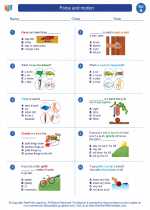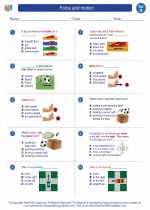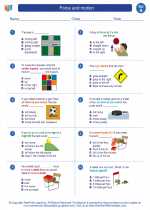Earth
The Earth is the third planet from the Sun and the only known planet to support life. It is a complex and dynamic system that is made up of many different components, including the atmosphere, hydrosphere, lithosphere, and biosphere.
Layers of the Earth
The Earth is composed of several layers, including the inner core, outer core, mantle, and crust. These layers have different compositions and properties, and they interact in various ways to shape the Earth's surface and support life.
Inner Core
The inner core is the innermost layer of the Earth, composed primarily of solid iron and nickel. It is extremely hot, with temperatures reaching up to 9,000 degrees Fahrenheit.
Outer Core
The outer core is a layer of molten iron and nickel that surrounds the inner core. It is responsible for generating the Earth's magnetic field through the movement of its metallic fluids.
Mantle
The mantle is a thick layer of rock and magma that lies between the outer core and the Earth's crust. It is responsible for the movement of tectonic plates and the formation of volcanic activity.
Crust
The Earth's crust is the outermost layer of the planet and is composed of solid rock. It is divided into several large and small tectonic plates that float on the semi-fluid mantle beneath them.
Atmosphere
The Earth's atmosphere is a layer of gases that surrounds the planet and provides the air we breathe. It is composed mainly of nitrogen, oxygen, and trace amounts of other gases, and it plays a crucial role in regulating the planet's temperature and climate.
Hydrosphere
The hydrosphere includes all the water on Earth, including oceans, rivers, lakes, and groundwater. Water is essential for supporting life and shaping the Earth's surface through processes such as erosion and deposition.
Biosphere
The biosphere refers to all the living organisms on Earth and the environments in which they live. It encompasses a wide range of ecosystems, from the depths of the ocean to the highest mountains, and plays a vital role in maintaining the Earth's balance and diversity.
Study Guide
- What are the four main layers of the Earth?
- How does the outer core contribute to the Earth's magnetic field?
- What are the primary gases that make up the Earth's atmosphere?
- Why is water important for the Earth's surface and life?
- What is the biosphere, and what role does it play on Earth?
◂Science Worksheets and Study Guides First Grade. Force and motion

 Worksheet/Answer key
Worksheet/Answer key
 Worksheet/Answer key
Worksheet/Answer key
 Worksheet/Answer key
Worksheet/Answer key
 Vocabulary/Answer key
Vocabulary/Answer key
